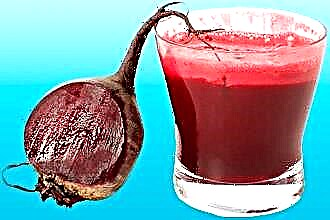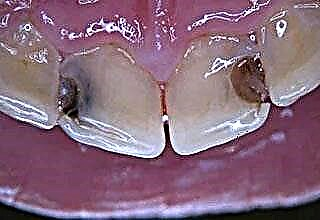Pain in the paranasal sinuses is an alarming symptom indicating the development of inflammatory processes in the airways. The culprits of pathological changes in the tissues of the nasopharynx are infections, allergic reactions and benign neoplasms. Only a qualified doctor can determine the reason why the sinus hurts after an endoscopic examination.
Respiratory diseases are treated with anti-inflammatory drugs and physiotherapeutic procedures. In the conditions of the ENT office, the paranasal sinuses are washed by the method of fluid movement according to Proetz. In the case of severe sinusitis, puncture of the frontal and maxillary sinuses is done, which allows you to remove accumulated purulent exudate from the affected cavities.
Causes of pain
 A burning sensation and pain in the nasal cavity signal damage to tissue structures in the airways. Very often, inadequate treatment of the common cold leads to inflammation not only of the nasal canals, but also of the paranasal sinuses. In this regard, pain localized in the nose begins to radiate to the area of the forehead, eyebrows, the back of the head, etc. Discomfort in the sinus can be provoked by:
A burning sensation and pain in the nasal cavity signal damage to tissue structures in the airways. Very often, inadequate treatment of the common cold leads to inflammation not only of the nasal canals, but also of the paranasal sinuses. In this regard, pain localized in the nose begins to radiate to the area of the forehead, eyebrows, the back of the head, etc. Discomfort in the sinus can be provoked by:
Allergy
Drug abuse often leads to the development of allergic reactions in the nasopharyngeal mucosa. People with chronic rhinitis can use vasoconstrictor drops for years, which can lead to serious complications. Irrational use of medications entails inflammation of the nasal mucosa and paranasal sinuses, which subsequently becomes the cause of pain.
Rhinitis medication is difficult to treat, so sinusitis often complicates the disease. If drug therapy is ineffective, the patient is prescribed surgical treatment. Vasotomy of the turbinates can reduce the blood filling of the submucous layer in the nasopharynx and thereby facilitate nasal breathing, as well as normalize the outflow of mucus.
Important! To prevent the development of a medication rhinitis, do not use vasoconstrictor drops for more than 5 days in a row.
Nasal polyp
Discomfort in the sinuses can signal the formation of polyps in the nasal cavity. Benign tumors are localized mainly in the mucous membrane of the nasopharynx or paranasal sinuses. As the size of the polyp increases, the pain intensifies and radiates to the head. The main manifestations of pathology include:
- nasal congestion;
- pain in the bridge of the nose;
- loss of smell;
- dryness of the nasopharynx.
Nasal polyps are a common complication of allergic rhinitis, sphenoiditis and sinusitis.
The true causes of benign tumors in the nasopharynx have not been established. But according to statistics, pathology often develops in people suffering from hay fever, chronic and allergic rhinitis.
Rhinosinusitis
 Rhinosinusitis is an acute or sluggish inflammation of one or more paranasal sinuses. In most cases, the disease is preceded by sluggish rhinitis, nasal septum injuries, flu and other colds. Typical manifestations of rhinosinusitis include:
Rhinosinusitis is an acute or sluggish inflammation of one or more paranasal sinuses. In most cases, the disease is preceded by sluggish rhinitis, nasal septum injuries, flu and other colds. Typical manifestations of rhinosinusitis include:
- pain in the nose with a sharp turn of the head;
- heaviness in the nose and brow region;
- nasal congestion;
- increased body temperature.
Chronic inflammation of the frontal (frontal) sinuses is fraught with the development of encephalitis, meningitis and brain abscess.
As a rule, inflammation in the nasal cavity is provoked by pathogenic viruses (influenza virus, adenovirus, rhinovirus) and bacteria (staphylococci, meningococci, Haemophilus influenzae). Therefore, antibiotics, antiviral drugs and physiotherapeutic procedures are used to treat pathology, aimed at liquefying and evacuating purulent exudate from the paranasal sinuses.
Other reasons
It should be noted that inflammation in the respiratory tract often occurs due to a decrease in immune defenses. The state of the immune system can be affected by:
- unfavorable ecology;
- poor nutrition;
- addictions;
- work in hazardous production;
- inhalation of polluted air.
In most cases, people get sick due to a decrease in local immunity in the ENT organs. To increase the body's resistance to infections, doctors recommend using immunostimulants and vitamin-mineral complexes on the eve of seasonal diseases.
Treatment methods
It is possible to eliminate pain in the paranasal sinuses only if inflammation in the respiratory organs is eliminated. Only a doctor can develop the most appropriate treatment regimen after rhinoscopy and identification of the causative agent of ENT disease. To destroy the infection in the paranasal sinuses, the following are usually used:
Medications
Conservative treatment of respiratory infections involves the use of medications that have analgesic, anti-inflammatory and wound healing effects. To destroy the infection inside the nasopharynx and prevent complications, patients are prescribed:
- antihistamines (Parlazin, Suprastin, Tsetrin) - eliminate allergic manifestations, swelling and inflammation;
- vasoconstrictor drops (Tizin, Knoxprey, Farmazolin) - relieve swelling and restore the patency of the nasal canals;
 analgesics ("Analgin", "Fenatsitin", "Butadion") - relieve pain by reducing the sensitivity of pain receptors in the nasal mucous membranes;
analgesics ("Analgin", "Fenatsitin", "Butadion") - relieve pain by reducing the sensitivity of pain receptors in the nasal mucous membranes;- non-steroidal anti-inflammatory drugs ("Ibuprfen", "Nurofen", "Nise") - prevent the production of inflammatory mediators, thereby reducing swelling in the paranasal sinuses;
- mucolytics ("Rinofluimucil", "Sinuforte", "Mukodin") - reduce the viscosity of mucus in the nasopharynx and accelerate its excretion from the respiratory tract;
- antibiotics ("Bioparox", "Augmentin", "Ceftriaxone") - destroy the microbial flora in the respiratory tract, which promotes recovery;
- antiviral drugs (Ingavirin, Relenza, Peramivir) - reduce the number of viruses in the nasal cavity, thereby accelerating the restoration of the integrity of the affected tissues.
Antibiotics can be taken for no more than 10 days in a row, if there is no effect or deterioration in health, you should consult an otolaryngologist.
Nasal lavage
To cleanse the nasal cavity and paranasal sinuses from purulent masses and pathogenic agents, doctors recommend resorting to rinsing. Nasal lavage is the safest and most effective method for eliminating inflammatory processes in the upper respiratory system. If the pain in the paranasal cavities was provoked by the development of sinusitis, the following drugs can be used to relieve the symptoms of the disease and eliminate inflammation:
 Dolphin;
Dolphin;- Furacilin;
- "Dioxidin";
- "Quicks";
- "No-Salt".
Important! To prevent liquid from getting into the mouth during the procedure, it is advisable to pronounce the sound "and-and-and" when rinsing.
It should be understood that due to the inflammation of the soft tissues, the lumen in the airways is greatly narrowed. To increase the effectiveness of the procedure, it is recommended to drip vasoconstrictor drops into the nose before carrying out it.
Conclusion
The paranasal sinuses are air cavities in the skull that communicate with each other through small tubes - anastomosis. Their inner surface is lined with mucous membrane, the inflammation of which can lead to painful sensations.Infections, benign tumors and allergic reactions can provoke unwanted reactions in the nasopharynx and paranasal sinuses.
Inflammation in the right and left paranasal sinuses can be treated with nasal steroids, antibiotics, antihistamines, antiviral agents, and vasoconstrictor drops. To reduce swelling in the mucous membrane of the maxillary and ethmoid sinuses, it is advisable to wash for at least 5-7 days in a row. This will flush out the vast majority of pathogenic agents from the nasopharynx and, as a result, increase local immunity.

 analgesics ("Analgin", "Fenatsitin", "Butadion") - relieve pain by reducing the sensitivity of pain receptors in the nasal mucous membranes;
analgesics ("Analgin", "Fenatsitin", "Butadion") - relieve pain by reducing the sensitivity of pain receptors in the nasal mucous membranes; Dolphin;
Dolphin;

